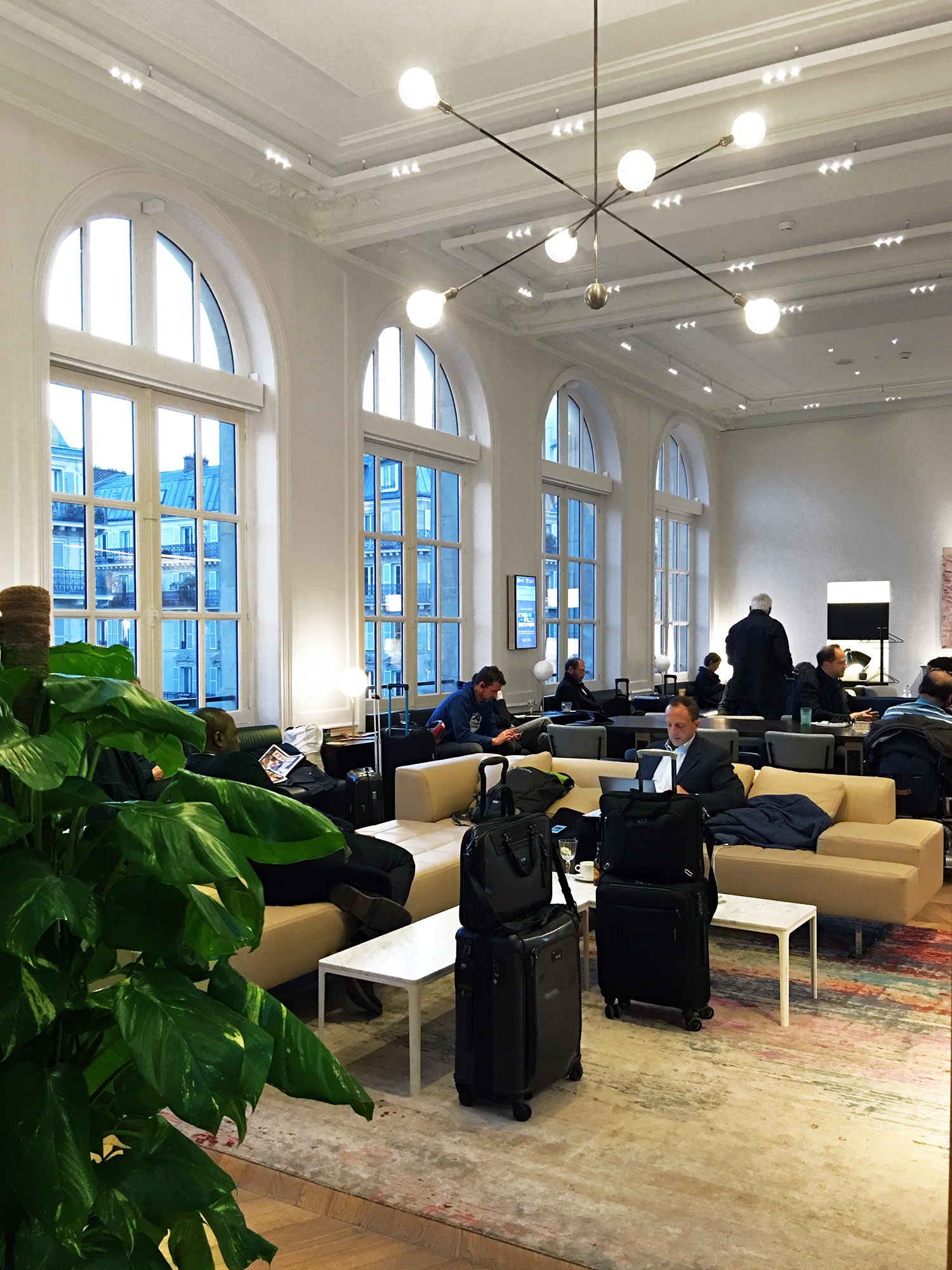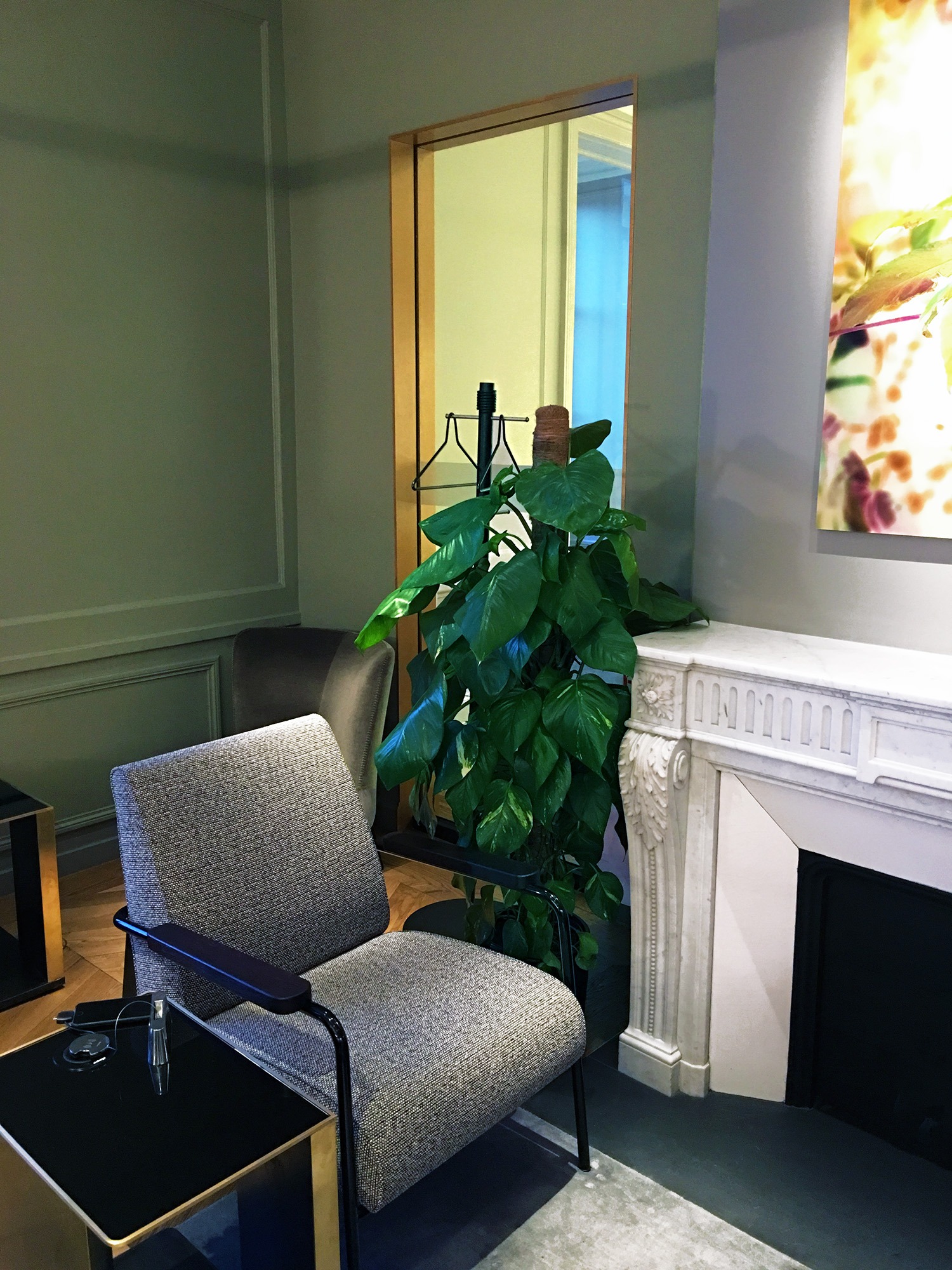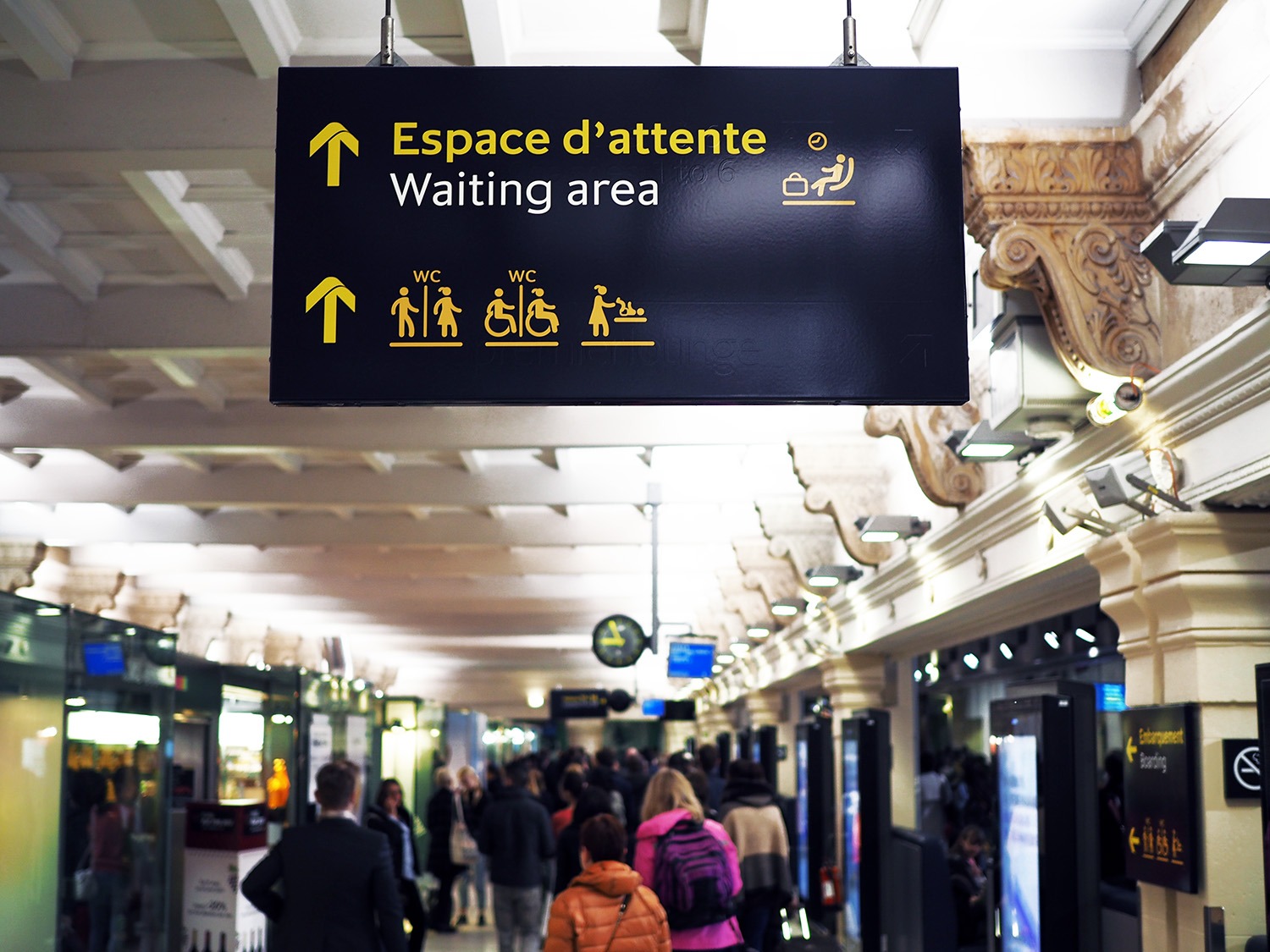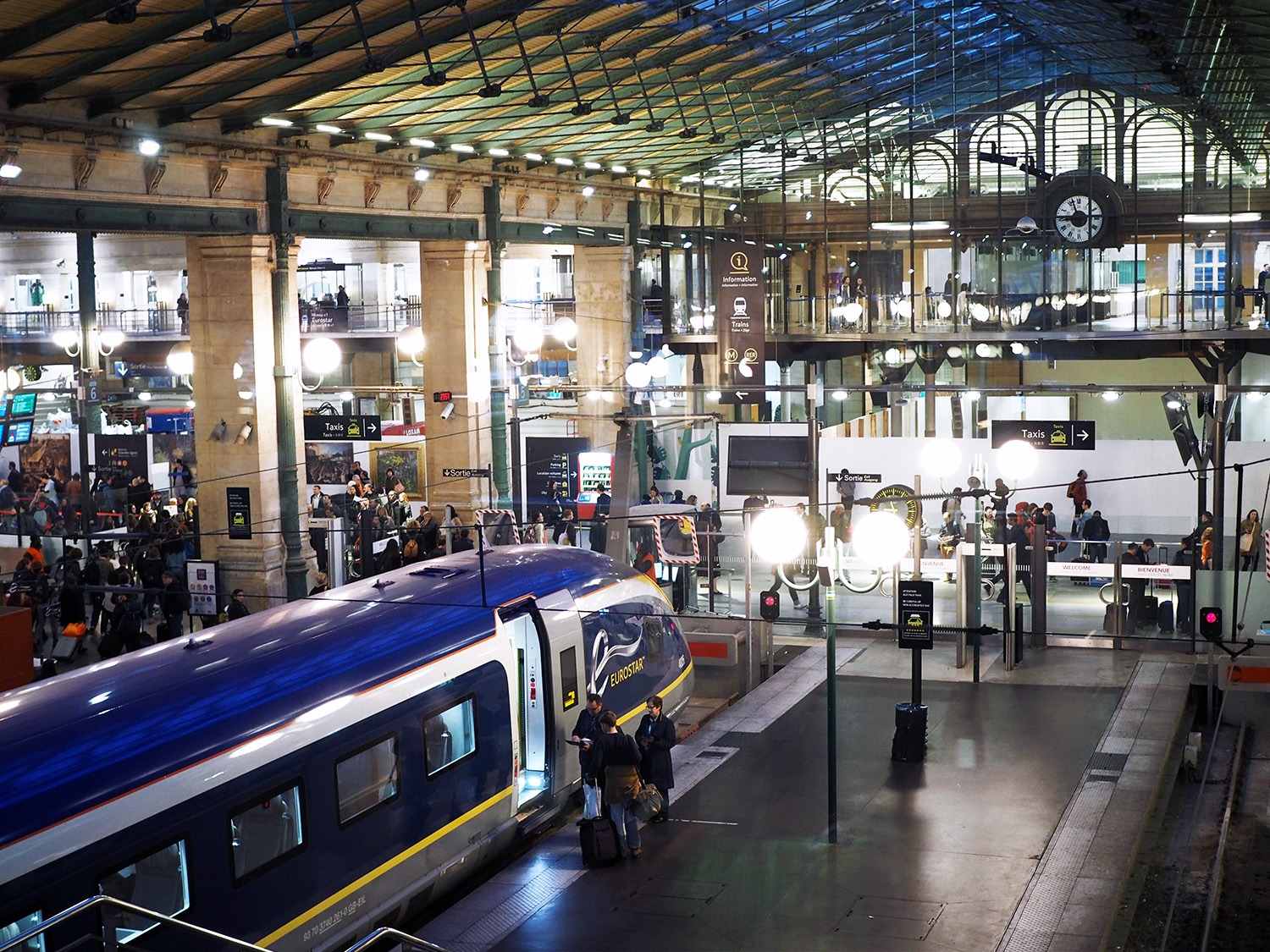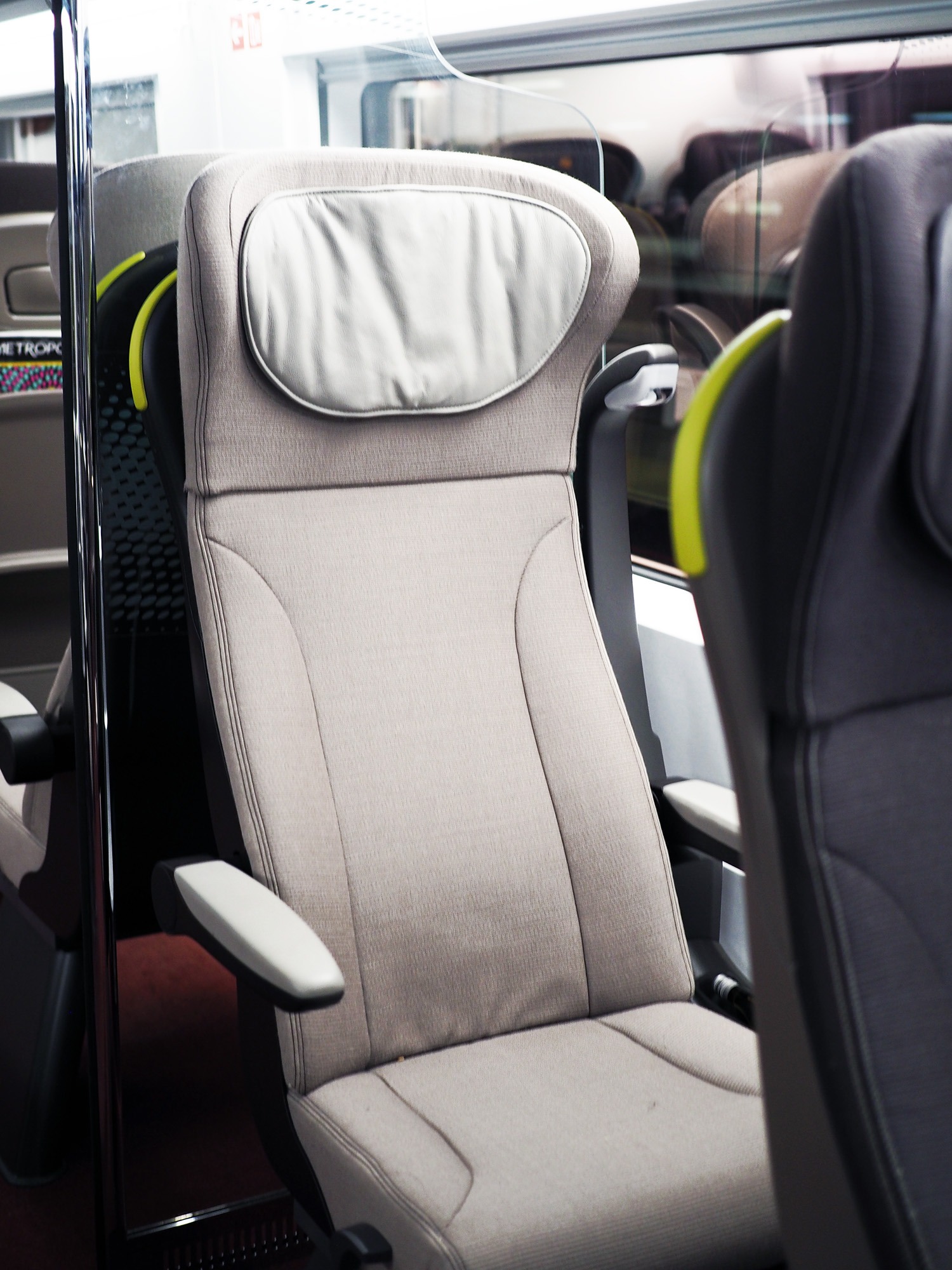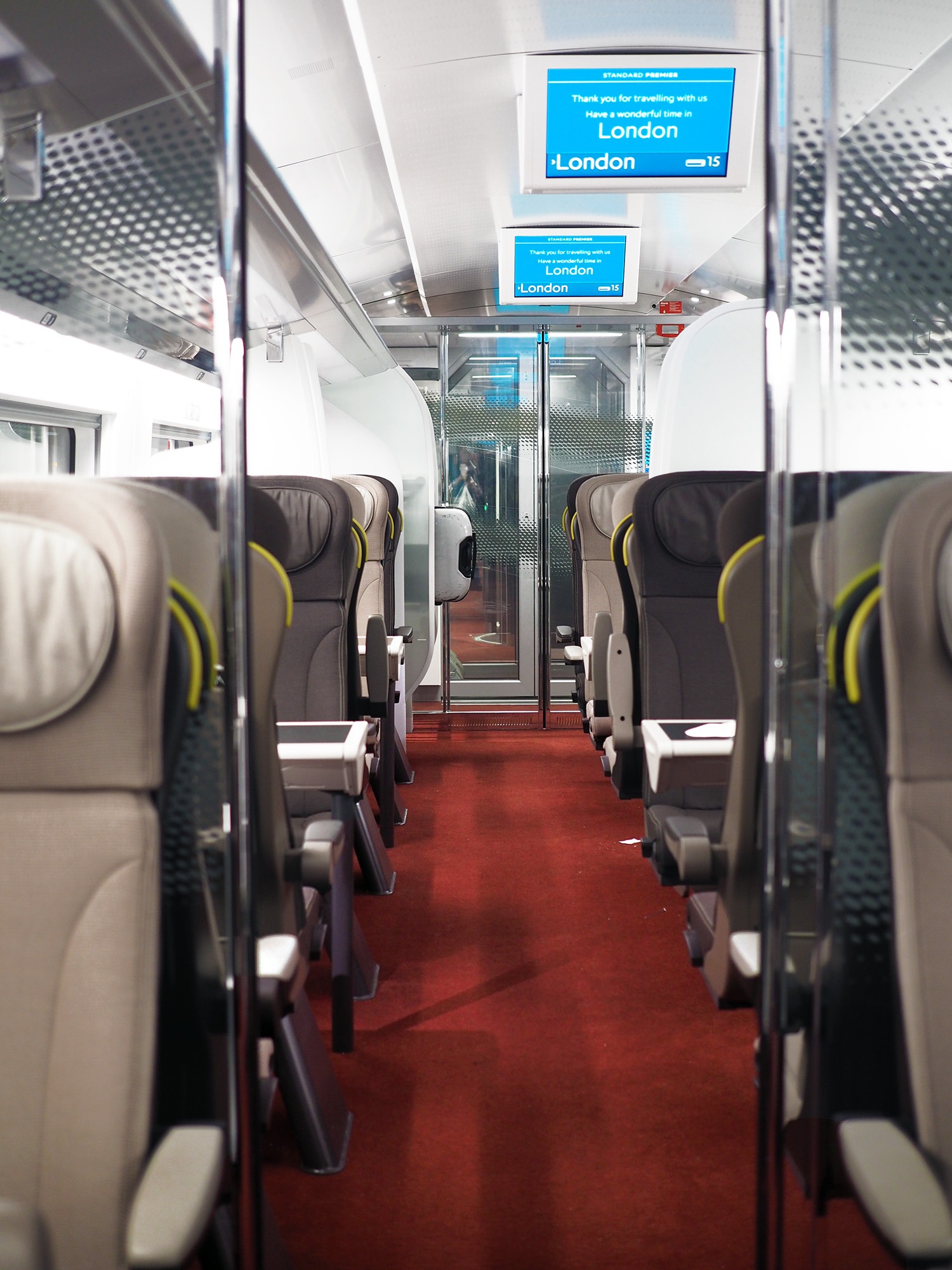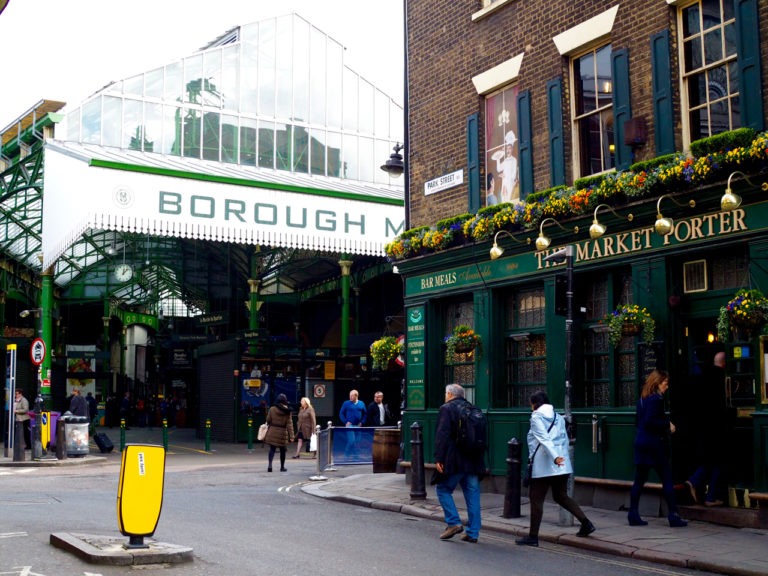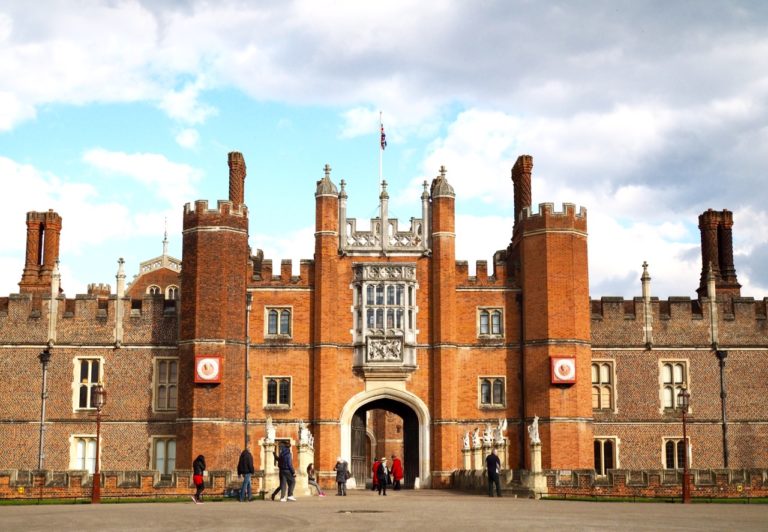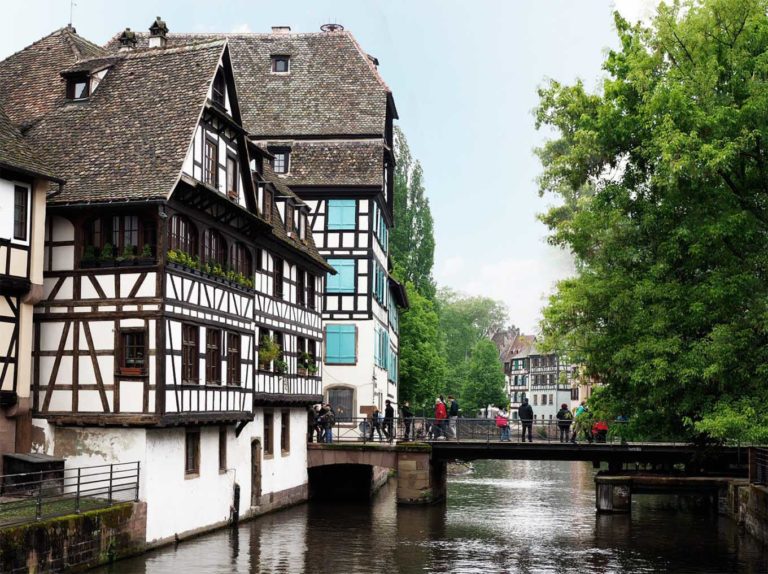Taking the Eurostar from Paris to London – what to expect
There truly is something irresistibly romantic about the idea of train travel in Europe, isn’t there? I’ve admittedly done rather extensive, practical research on the process and rode trains in about a dozen countries across the Old Continent (using a Eurail pass most of the time), which I can partly attribute to my fear of flying; but aside from the fact that I’m utterly useless around airplanes, I just genuinely enjoy riding trains.
And that includes crossing the Channel in the brand new Eurostar.
Did you know, for example, that upwards of 95% of Eurostar trains arrive on time or within 15 minutes, whilst competing short-haul flights typically manage only 65-70% measured by the same standard. Not surprisingly, Eurostar has now captured over 70% of the London-Paris market from the airlines.
I was recently given the opportunity to experience the First Class Business Premier class between Paris Gare du Nord and London St Pancras. Here are my impressions along with a few practical tips to help you prepare for your very own journey across the Chunnel.
What’s It Like to Ride the Eurostar from Paris to London?
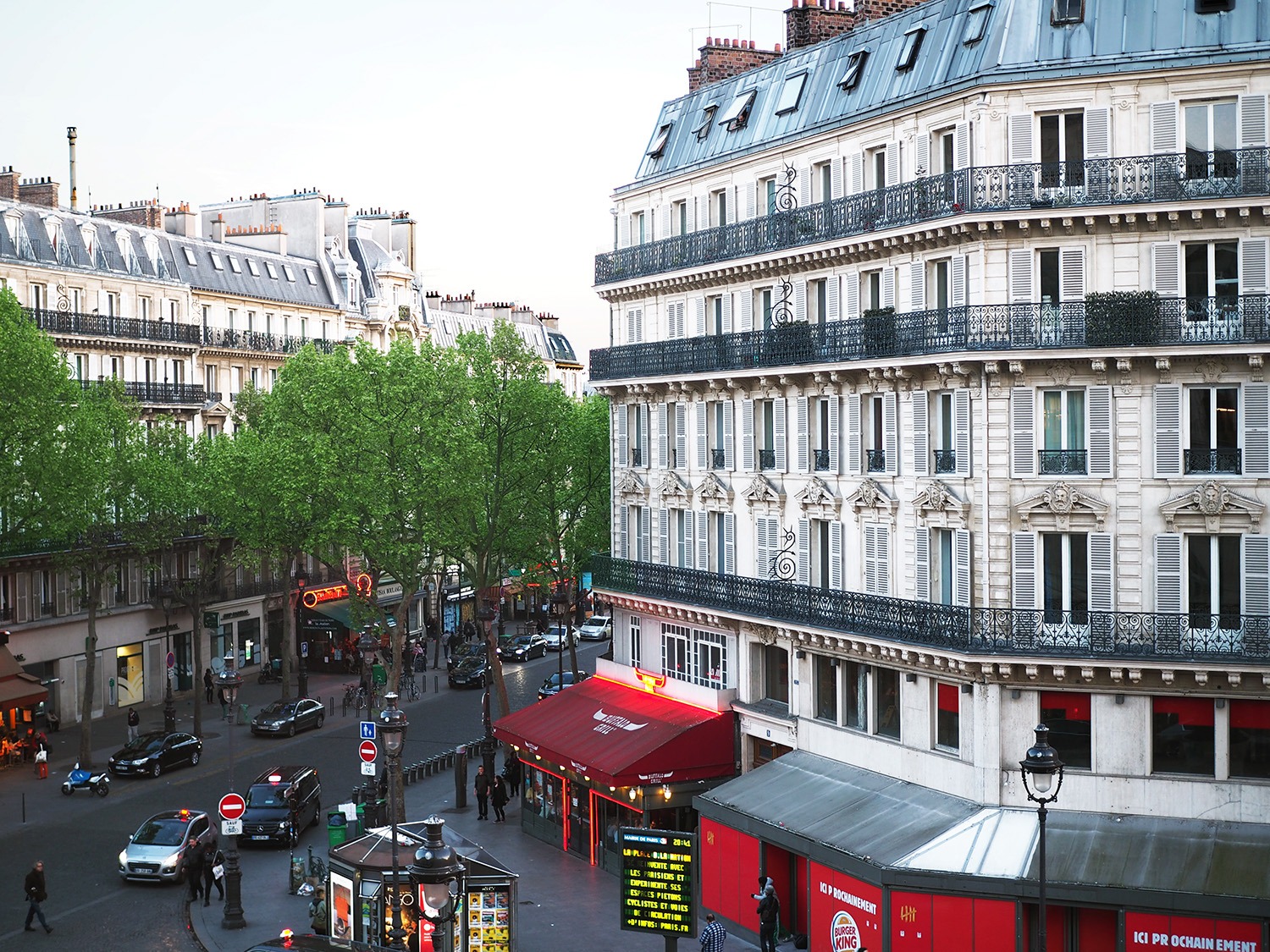
Having arrived at Gare du Nord a solid hour and a half prior to scheduled departure time (you can never be too early in Parisian trafic) and having gone through immigration and security swiftly, I sat comfortably in the newly-renovated Business Premier lounge for a little while. Sipping on a complimentary glass of wine, admiring the 19th-century features, munching on canapés, I watched business men type furiously on their computers, eager to get as much work done as possible before their inevitable parting with Wi-Fi and modern civilisation.
Needless to say the lounge is tastefully decorated and welcoming throughout, with numerous quiet nooks and, most importantly, charging stations and clean washrooms.
Mind you, there is ample seating and washrooms elsewhere in Gare du Nord station but they are both far more chaotic than the Business Premier lounge’s.
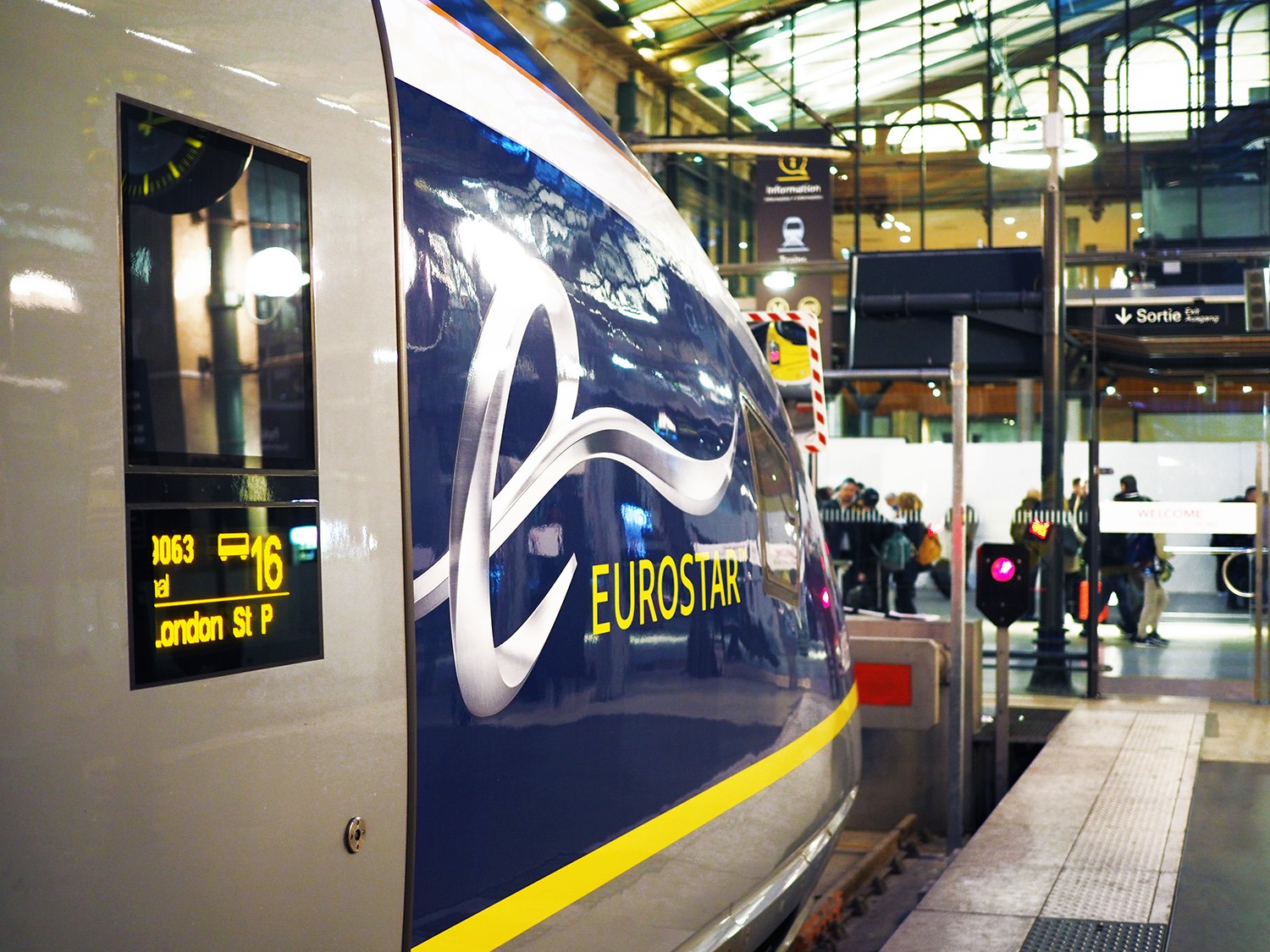
Onwards to the trains after a timely announcement in the lounge. My seat is in one of the rear trains and so I head towards that direction, eager to store my luggage and find my seat.
I was a little worried that I wouldn’t be able to fit my gigantic, unmistakably North American suitcase in one of the compartments at either ends of the train but that simply was a gross underestimate of how efficient and stylish Europeans are even with the tiniest of suitcases.
And just a few minutes, it’s time to bid Paris adieu (au revoir would be more appropriate, as I can never stay away for too long), as we make our way to London a mere 300 kilometres per hour.
Pictured below was dinner, a combination of quinoa salad and quiche along with an excellent chou for dessert and, France being what it is, a cheeky bottle of wine for one. Simply delightful.
A note on Standard Premier Class: while the Eurostar’s Standard class is perfectly acceptable and comfortable, especially on the newer e320 trains, Standard Premier does offer more generous legroom and wider seats as well as a light meal. There usually are fewer families in Standard Premier carriages, too, resulting in more tranquil journeys.
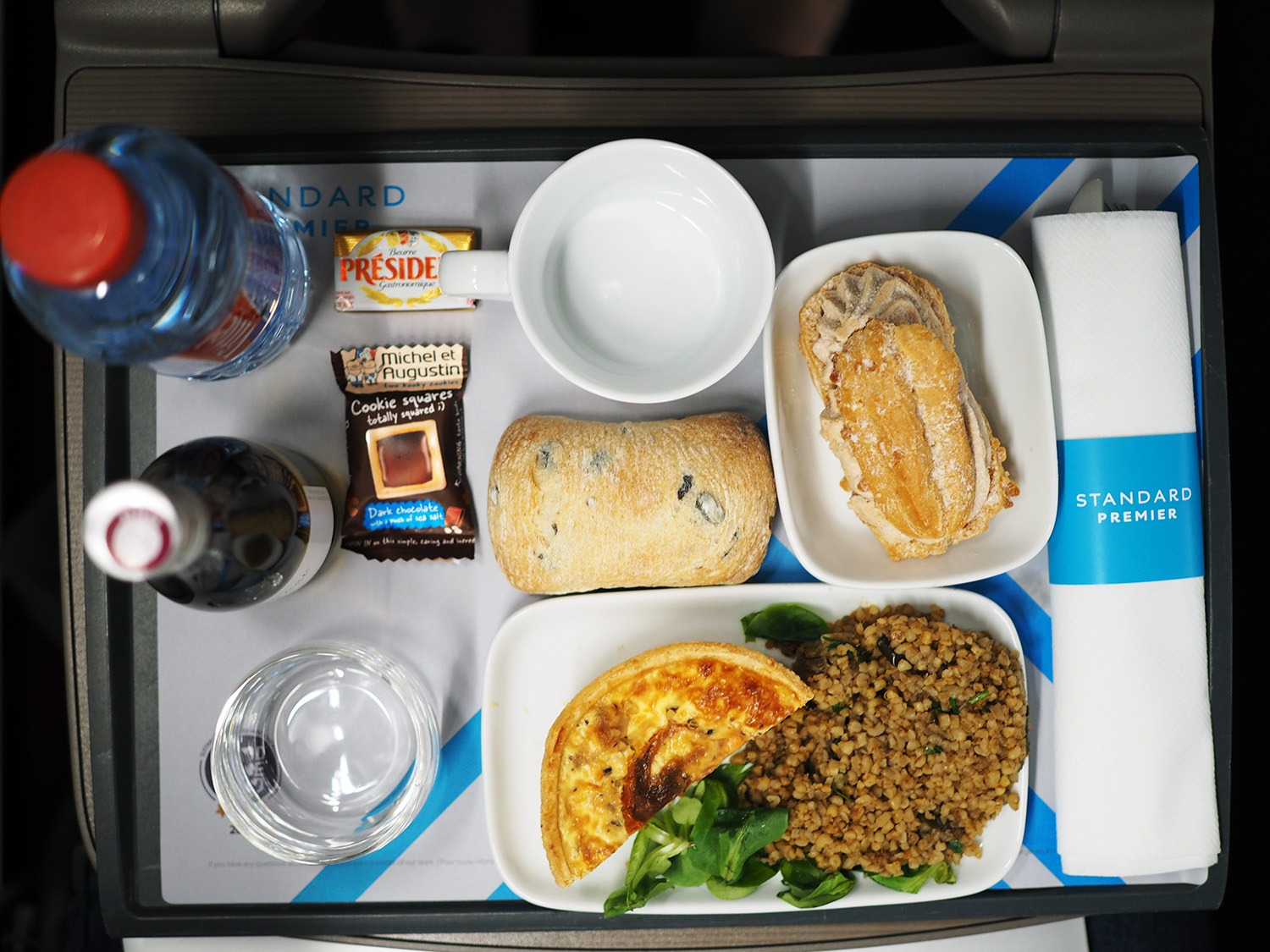
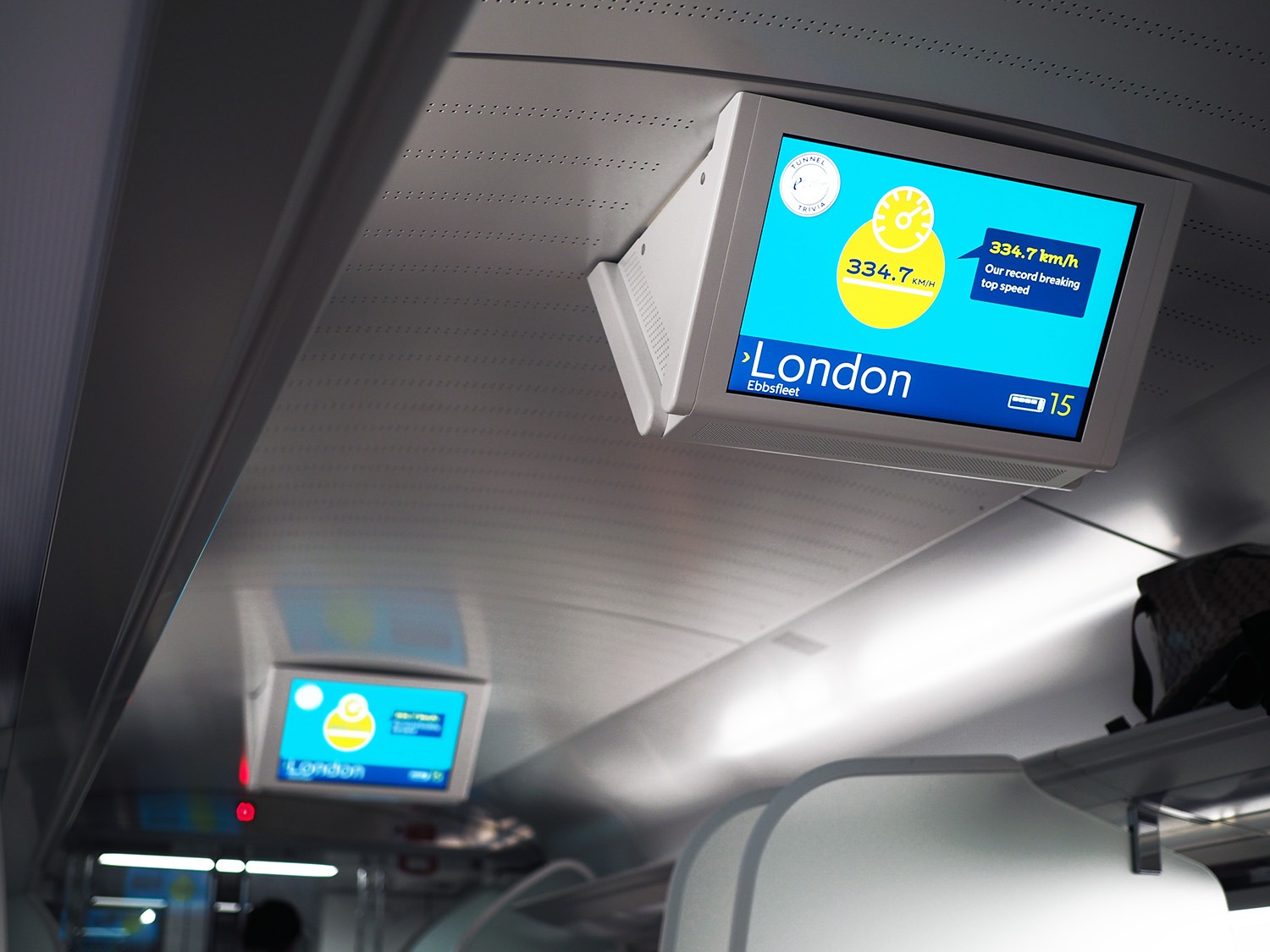
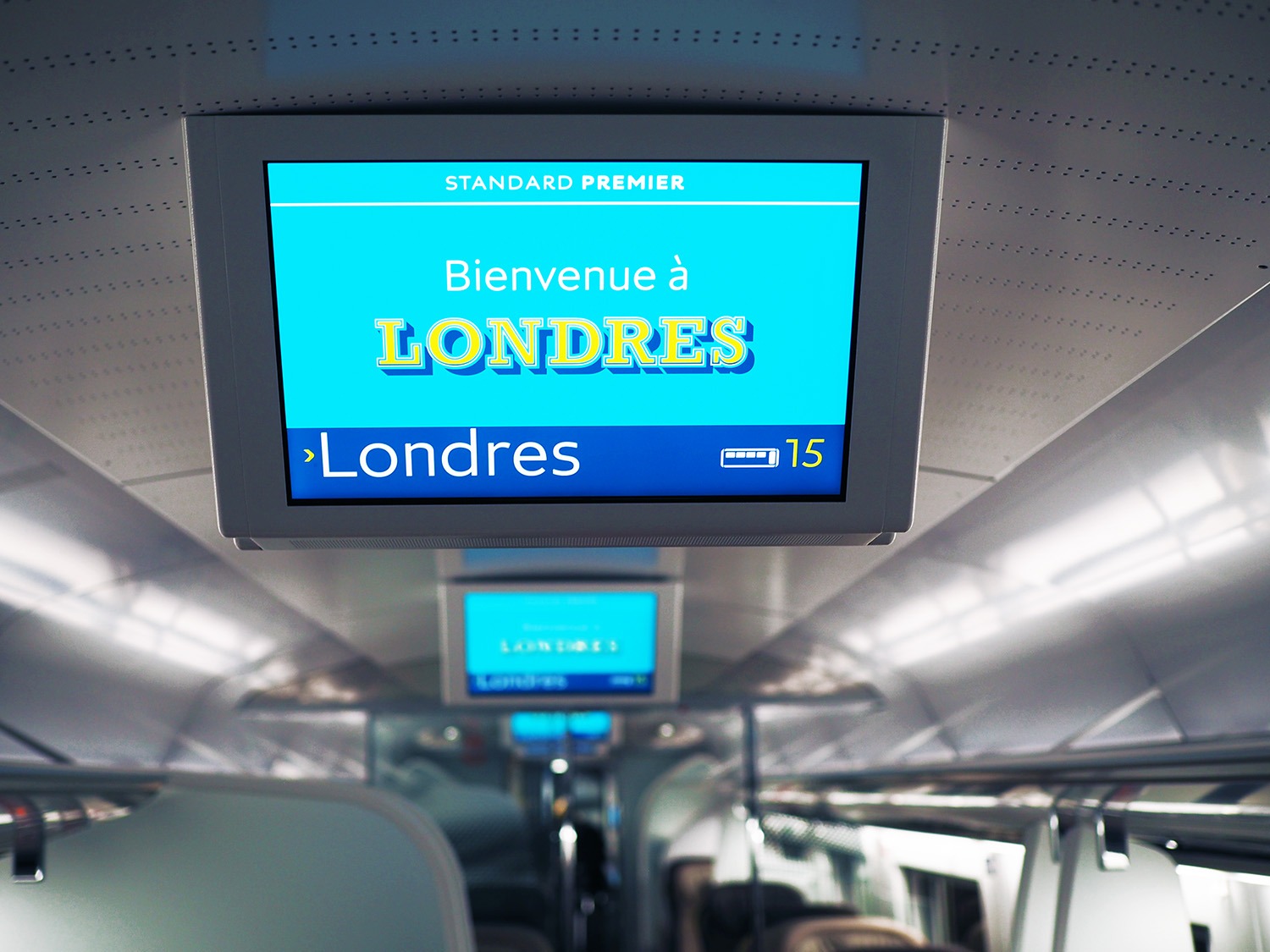
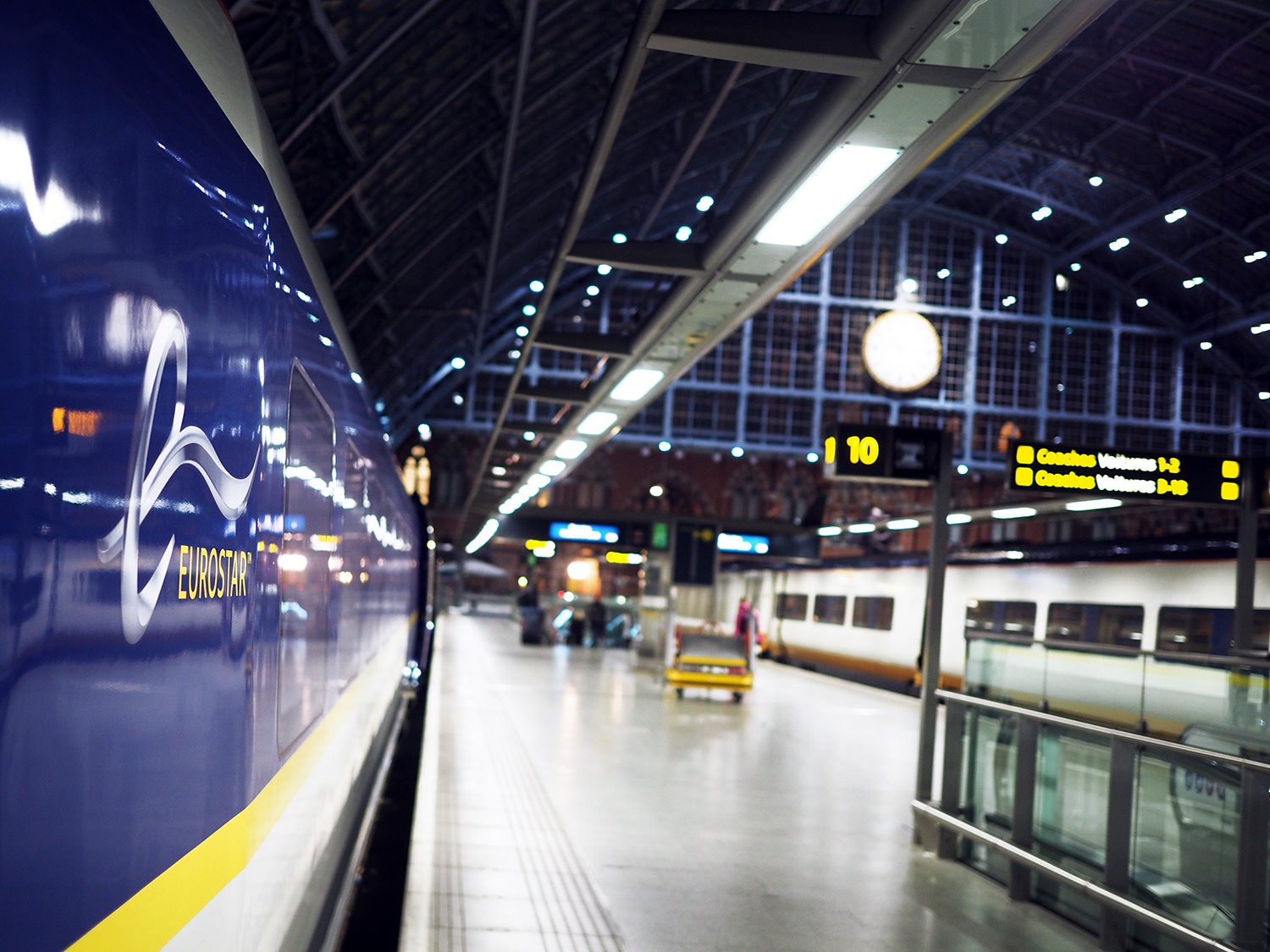

Fun fact: the Channel tunnel is 50,45 kilometres long and is just one of the three tunnels crossed by the Eurostar from Paris to London. The tunnel is 195 metres deep at its deepest point. You’ll know you’re in when you feel your ears pop!
And just like that, I arrive in style at London St Pancras, a mere two and a half hours later but seemingly worlds away from the French capital.
Is the Eurostar from Paris to London the best? Absolutely. The Eurostar completely obliterates the stress of airport transfers, cumbersome security checks and incredibly shrinking airplane seats; in short, it’s the carefree, comfortable and efficient way to travel between the two capital’s centres.
Finding the cheapest Eurostar fares

- Fares start at £44 one-way or £58 return in Standard Class.
- The earlier you book, the cheaper; tickets can be reserved as early as 180 days ahead. Keep in mind, however, that Eurostar tickets are subject to dynamic pricing much like airlines; in other words, cheaper seats sell the fastest and prices increase dramatically as travel dates approach.
- If pricing is the main concern, opt for off-peak journeys as they are more affordable than say, Friday afternoon or Sunday evening trains, which are hugely popular. That’s just the logic of offer and demand: the more popular the route, the least likely it is to have large numbers of unavailable seats, the more expensive each individual seat will be.
- Note that travel on Eurostar requires a separate ticket and cannot be used in conjunction with rail passes. However, many passes include discounted rates called a Passholder fare.
Tips for riding the Eurostar
- Note that there is an hour’s time difference between London (UTC+0) and Paris (UTC+01:00).
- The Eurostar crosses the border between the Schengen area and Britain, and therefore is subject to immigration checks before boarding. Arrive at the station at least one hour prior to scheduled departure time to allow enough time for customs and security checks. It’s a much smoother process than it would be at the airport, questioning is fairly straightforward and security does not require passengers to take their shoes off. If you’re a citizen of a non-EU country, you will need to complete a landing card to hand to immigration staff.
- The latest you can check-in is 30 minutes prior to departure.
- Boarding commences approximately 20 minutes prior to departure.
- You MUST keep your passport handy at all times during the journey. Do not leave it in your suitcase 10 rows down under any circumstances.
- As mentioned earlier, there are luggage compartments on either ends of each train for larger suitcases. There is also overhead storage for smaller items such as laptop bags or carry-on luggage.
- Seat61 has listed pretty much everything travellers should know about riding the Eurostar, including videos and helpful tips.

